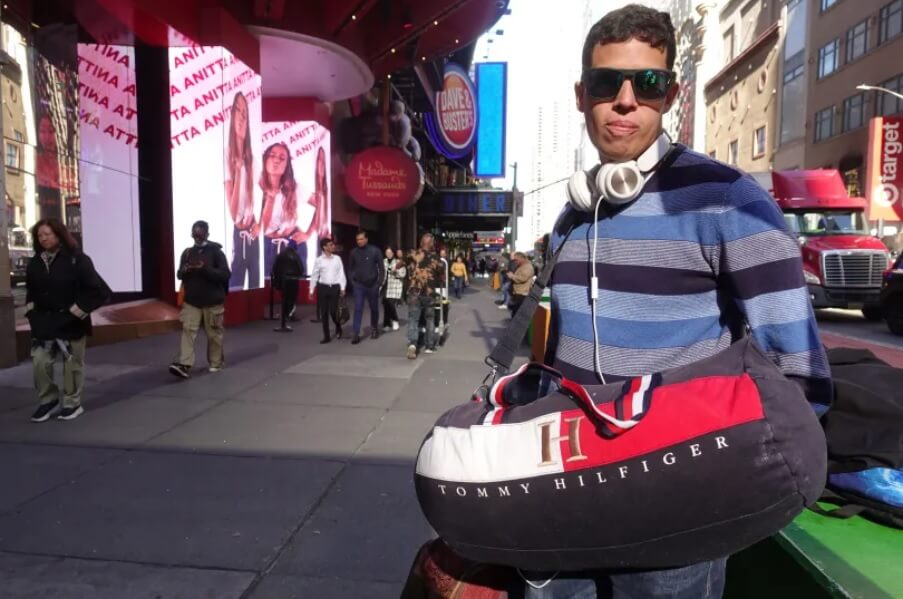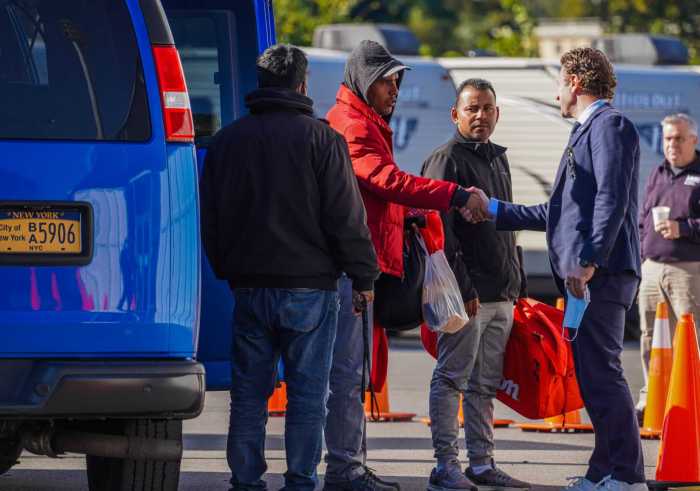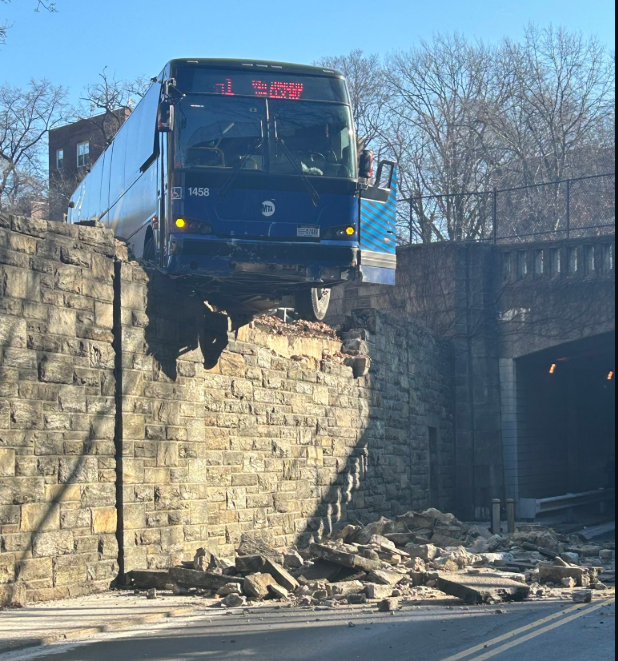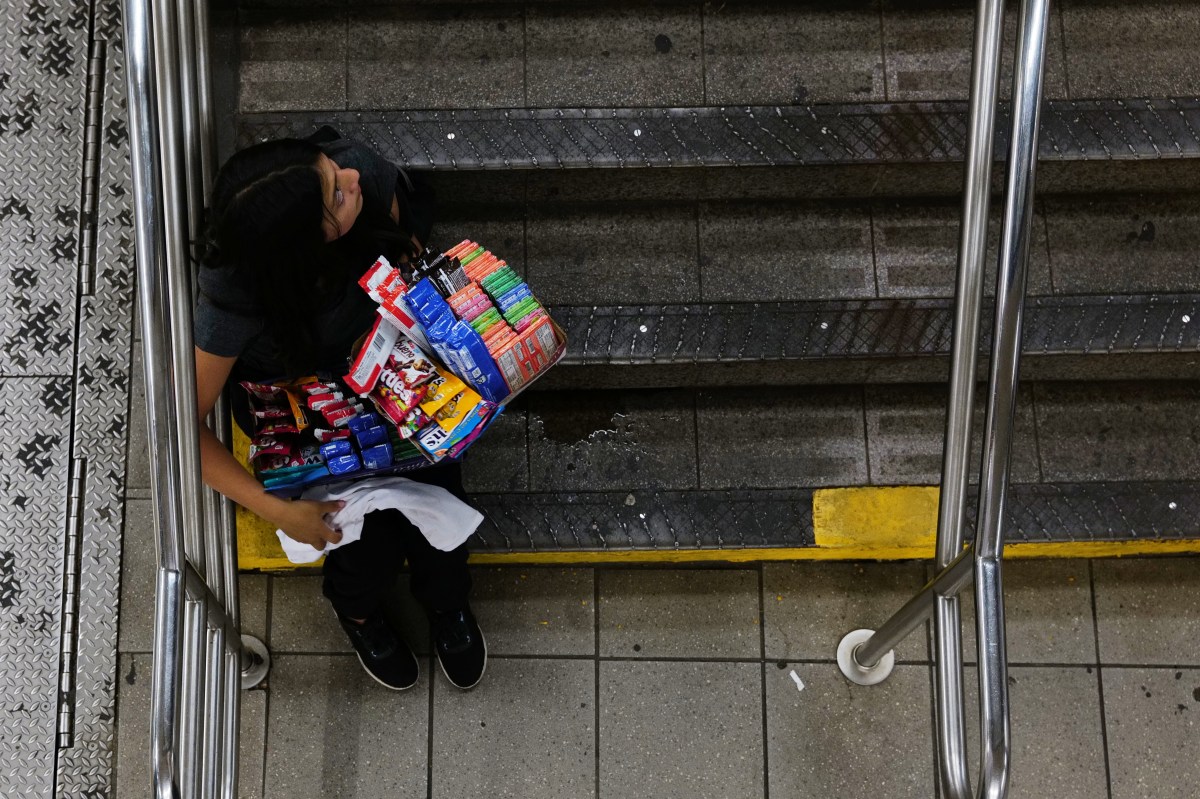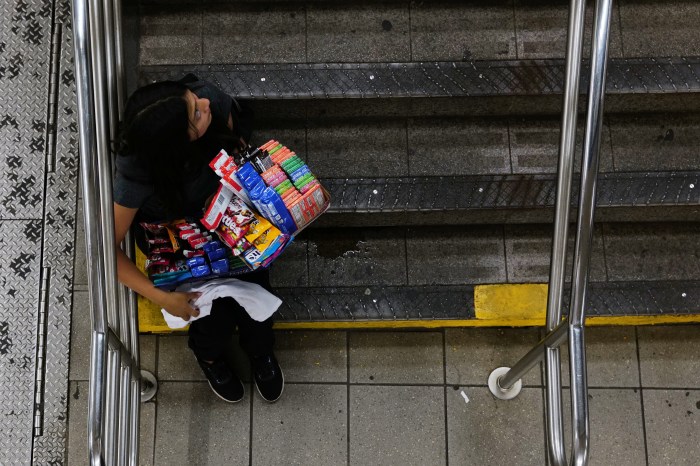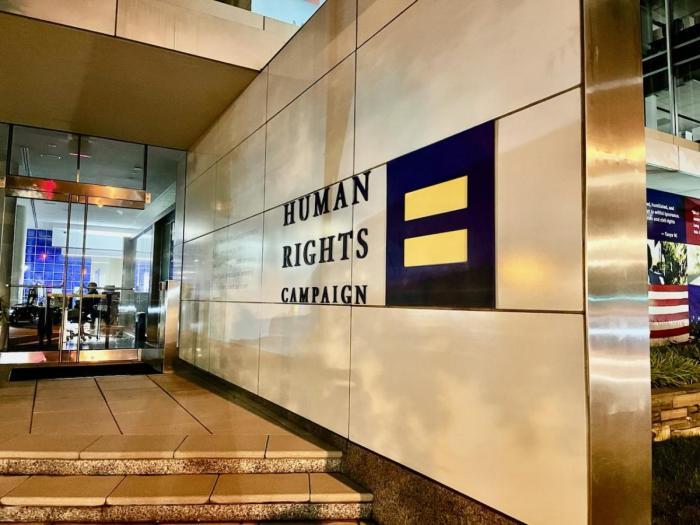This article was originally published on 5:10 a.m. EDT by THE CITY
Wilson Fuentes, 28, waited outside Midtown’s Candler building with a suitcase, backpacks and a duffle bag in hand. The Venezuelan had been ordered to leave the migrant shelter there, where he’d been living since June and this summer had received a notice that his time would be up in 60 days — a date that arrived Wednesday.
He was headed to the Roosevelt Hotel, the city’s main intake center for migrants, aiming to secure a bus ticket to Atlanta.
“I did what I could, but I can’t see myself here,” Fuentes said in Spanish on Wednesday morning. “I like New York a lot. It’s very beautiful and everything, but here, I didn’t have a chance.”
Several hundred migrants have had their time in New York City-sponsored shelter run out since Saturday, the first wave to see their time run out on 60-day notices that had warned them they must exit. The time limits on shelter stays are unprecedented in the more than four decades that New York City has agreed to a right to homeless shelter for anyone who seeks it, without time limits.
The evictions so far have been centered at the Candler Building, a vacant office tower on 42nd Street converted in March to house more than 800 migrants. Fewer than half of the people who have had their time run out have returned to the Roosevelt Hotel to seek another shelter bed, Dr. Ted Long, who oversees some migrant shelters for the city’s Health and Hospitals system, said at a press briefing on Wednesday.
“We intentionally started to do the 60-day notices…and at that site, it was paired with intensive case management,” Long said, without elaborating on what exactly that case management accomplished. “And that’s why over time, we actually saw some people be able to leave before day 60.”
In the coming days thousands more migrants will have their time in shelter run out. All told, 13,500 migrants have received 60-day notices, city officials said Wednesday — a number that covers nearly all of the adults without children who have been staying in city shelters. An additional 690 migrants have received 30-day notices upon entering or re-entering the shelter system, city officials said Wednesday.
The reduction of time migrants can stay down to 30-day stints is part of a new city policy that went into effect last week and first reported by THE CITY. City officials are also discussing creating a similar deadline for the more than 40,000 migrants in shelters who are part of family units with children.
David Velazquez, a 24-year-old Venezuelan migrant, left Candler at the end of his 60 days on Saturday morning, without having found another place to stay. He packed his belongings without protest and went to the Roosevelt Hotel to reapply. By the next day he had a cot at a city-sponsored respite center in Harlem.
“We know a lot of people want this opportunity. We’re not going to argue with them,” he said in Spanish. “We don’t want any trouble with anyone.”
‘Wait, Wait, Wait, Nothing More’
The evictions come as New York City sees yet another spike in new arrivals, with the number of people crossing the border again increasing in recent days. An administration source noted been plans to close down a large-scale respite center on Hall Street in Brooklyn, but by Wednesday the city had to begin returning cots back into the building to ensure people didn’t end up sleeping in the streets. Through Sunday, 115,200 people were living in city shelters, including 61,400 migrants who are mostly living in a parallel system.
Deputy Mayor Anne Williams-Isom said at a press briefing on Wednesday that the city will be distributing updated flyers to migrants at the border and in other U.S. cities, warning them in Spanish and English: “you will not get a hotel room” in New York City and “asylum seekers are now getting letters to move out of the shelter.”
“We definitely do want to discourage people from coming here so that we can pretty much deal with the 113,000 people that are in our system right now,” Williams-Isom said.
Those efforts include a “three-week sprint” announced earlier this month, to survey all migrants in the city’s care to figure out who might be eligible to apply for work authorization right away, and who could qualify to apply for Temporary Protected Status that will soon be available to people from Venezuela.
Federal and state officials have charged New York City had lost track of who was staying in shelters, and by failing to do basic case management on who might qualify for work permits. That issue came to light over the past week, through confusion over how many Venezuelans staying in city shelters might qualify for the newly expanded TPS. After several reversals, city officials said 15,000 Venezuelans, including 9,500 adults, would qualify, though they’d so far surveyed just 70% of residents so the numbers could still increase.
‘That’s Not a Life’
Migrants returning to the Roosevelt Hotel from Candler earlier this week were joined there by hundreds others newly arrived in New York City.
As city shelters ran out of cots this summer, men and women slept outside the intake center on the sweltering sidewalk for a week. Now, the backlog is happening behind closed doors. The city has taken over two vacant storefronts along the perimeter of the Roosevelt Hotel that used to house a craft beer bar and a men’s salon. The New York Post reported people were sleeping on the floor overnight, as the number of new arrivals climbed, and that city workers then blacked out the bar’s windows.
/cdn.vox-cdn.com/uploads/chorus_asset/file/24954377/092523_roosevelt_hotel_storefront_2.jpg)
Some migrants who spoke with the CITY reported getting a new shelter placement in a matter of hours or overnight after going back to the Roosevelt. Others said they’d been waiting multiple days and nights, shuffled back and forth between the two waiting rooms, only able to doze off in chairs or on the ground.
“You have to wait, you have to wait, the shelters are full,” said Jason Holgin, 39, a Colombian migrant who had just arrived from the border. Wrapped in a blanket outside the Roosevelt Monday evening, he said he’d spent two nights there hoping for a cot.
/cdn.vox-cdn.com/uploads/chorus_asset/file/24958247/DSC04484.jpg)
“Wait, wait, wait, nothing more.”
The great shuffle underway now is not exactly new. Over the past year, migrants have been sent all over the city, sometimes with little or no notice, as different shelters opened and others closed.
Since his arrival in January, Jose Rivas, 33, had stayed in three shelters – the Watson Hotel, the Brooklyn Cruise terminal and, since the spring, the Candler. He has until Oct. 2 to get out, and says he planned to seek another cot at that point.
“I have to leave so they relocate me,” he said. “I’ll see where they send me.”
Rivas was doing odd jobs off the books to save up money to send for his wife and two children, who were set to leave Venezuela for the U.S. in November if all goes according to plan.
“We came looking for the American Dream, you understand,” he said. “And it’s here, you just have to fight for it.”
/cdn.vox-cdn.com/uploads/chorus_asset/file/24957054/092723_candler_shelter_2.jpg)
Others, however, said that the musical chairs was exhausting when they hadn’t found another place to stay by the end of their 60 days.
“They’re sending people from there to here, and sending people from there to here,” said Jose Arturo Acosta, 45. “It doesn’t make any sense.”
To reporters, Long pleaded for patience. “I would not consider it a failure if within 60 days, I’m not able to, for 100% of asylum seekers determine and execute on where they’re going to spend the next several years of their life,” he said.
Fuentes, who grew up on a farm in the Venezuelan countryside, said a friend he’d made at the shelter over the summer had left for Atlanta, where he had already found a job and a place to stay and had offered to help him out. He eagerly accepted when his 60 days were up.
Fuentes said his decision to leave was less about case management and more about feeling like he’d reached a dead end.
He hadn’t been able to get an IDNYC card. He’d tried over and over to get stable employment but gigs he’d get in construction or restaurants kept falling through after a day or so.
Above everything else, he was fed up living pressed up against hundreds of others, enduring a constant battle for any modicum of personal space. Another shelter resident had recently started smearing feces on the walls, he said.
“You close in on yourself. You’re stressed all the time,” he said. “Moving from place to place to place, that’s not a life.”
THE CITY is an independent, nonprofit news outlet dedicated to hard-hitting reporting that serves the people of New York.



